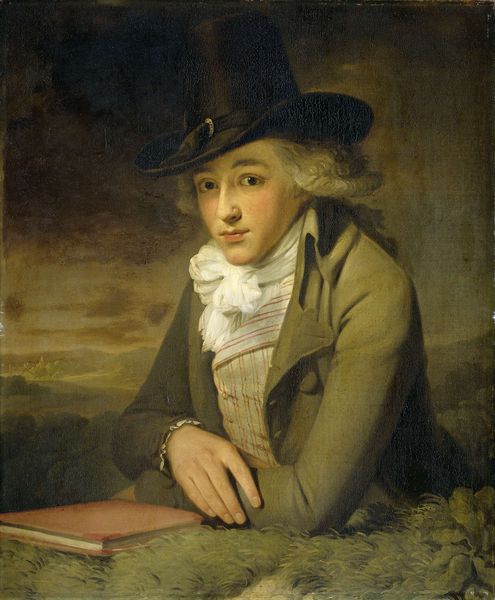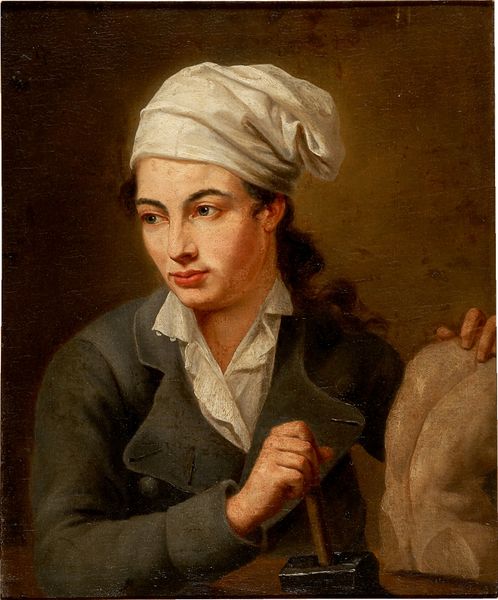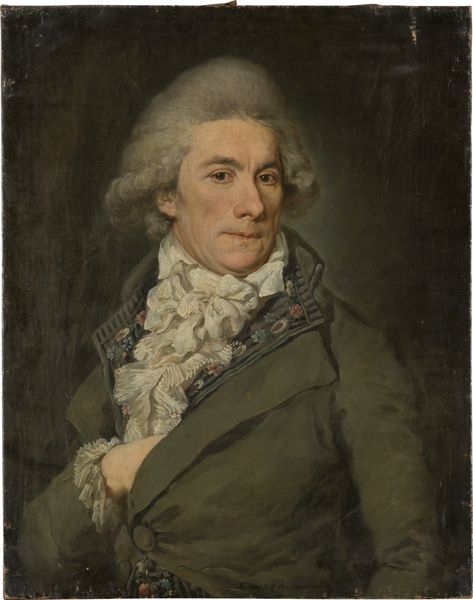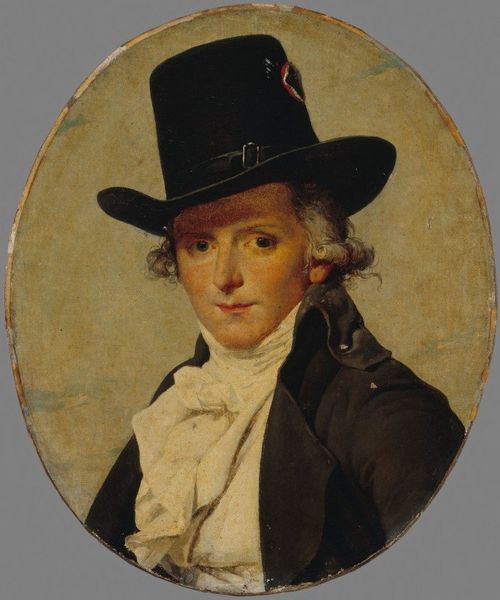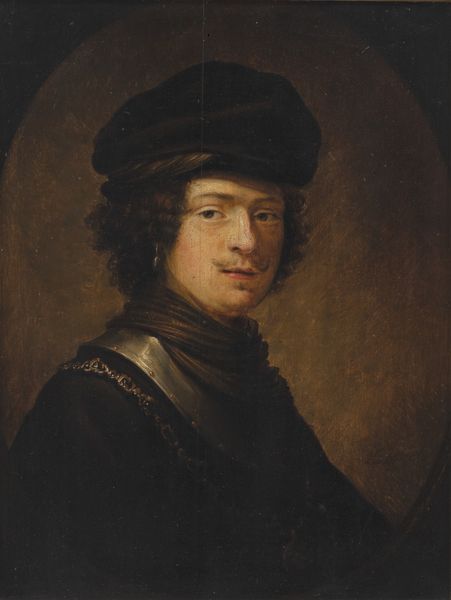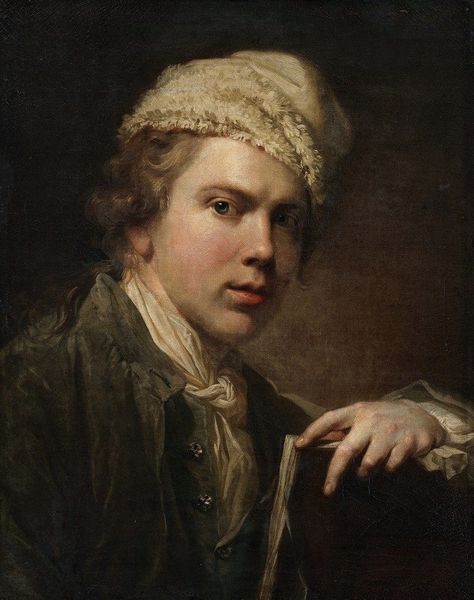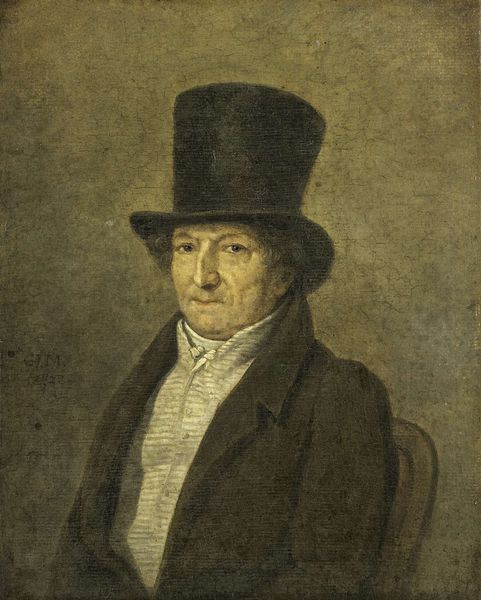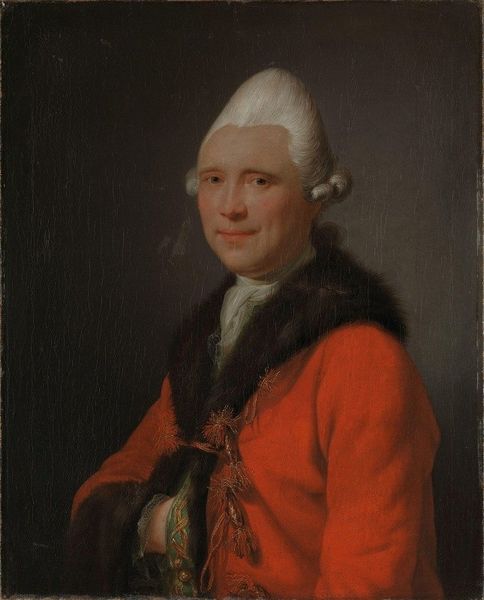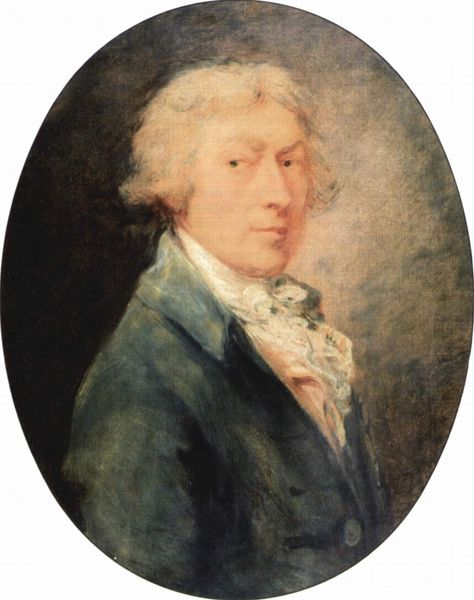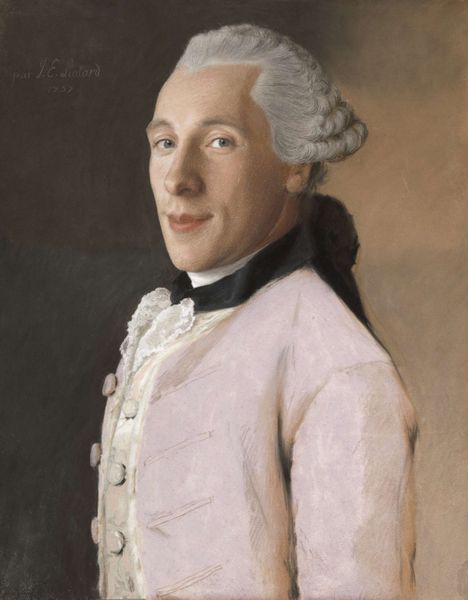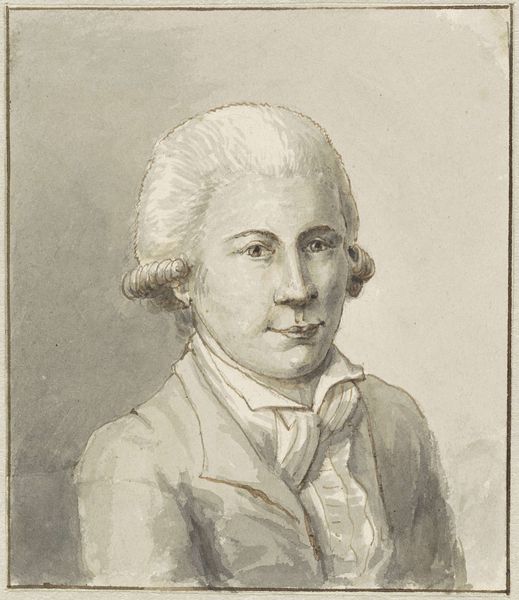
painting, oil-paint
#
portrait
#
figurative
#
painting
#
oil-paint
#
romanticism
#
genre-painting
Copyright: Public Domain: Artvee
Editor: Here we have Louis-Léopold Boilly's "Portrait of an Actor, in a White Jacket with a Red Collar," painted in 1800, using oil paints. The actor’s gaze is intense. What's most striking to you about this particular painting? Curator: What's striking is the blatant staging and presentation of self in 1800. We're witnessing the performance of identity. I'd want to examine Boilly's methods and choices. What kind of pigment did Boilly select, and what processes led to its production? Knowing where these supplies came from helps illuminate networks of commerce and global exchange shaping art in that era. Editor: So, it's not just the subject, but the sourcing of the paints themselves. How would this change our interpretation of Boilly's intentions? Curator: Consider how Boilly utilizes layers of paint to create the actor’s face. Every brushstroke denotes labor, echoing an industrialising world reshaping social structures. We may ask whether Boilly aimed to glorify artistry by using a complicated layered system, or whether he subtly critiqued these developing manufacturing techniques through this work. How do you see it? Editor: I initially viewed it as a simple portrait but understanding how the material choices reflect societal changes of the time provides a much richer perspective. It highlights art as a product deeply entwined with social and economic forces. Curator: Exactly! Recognizing artistic production involves multiple facets challenges traditional art perception, prompting questions concerning authorship, ownership, plus historical contexts influencing creation and viewing artwork. It moves beyond what is simply depicted, revealing a layered story that painting may show through material.
Comments
No comments
Be the first to comment and join the conversation on the ultimate creative platform.
